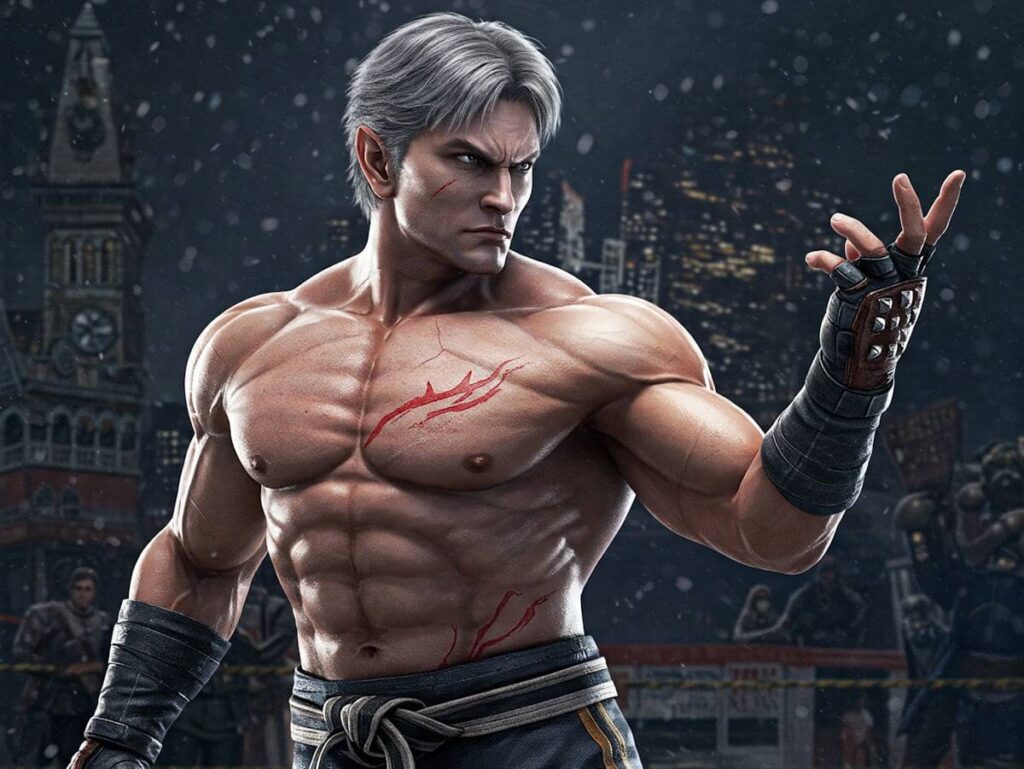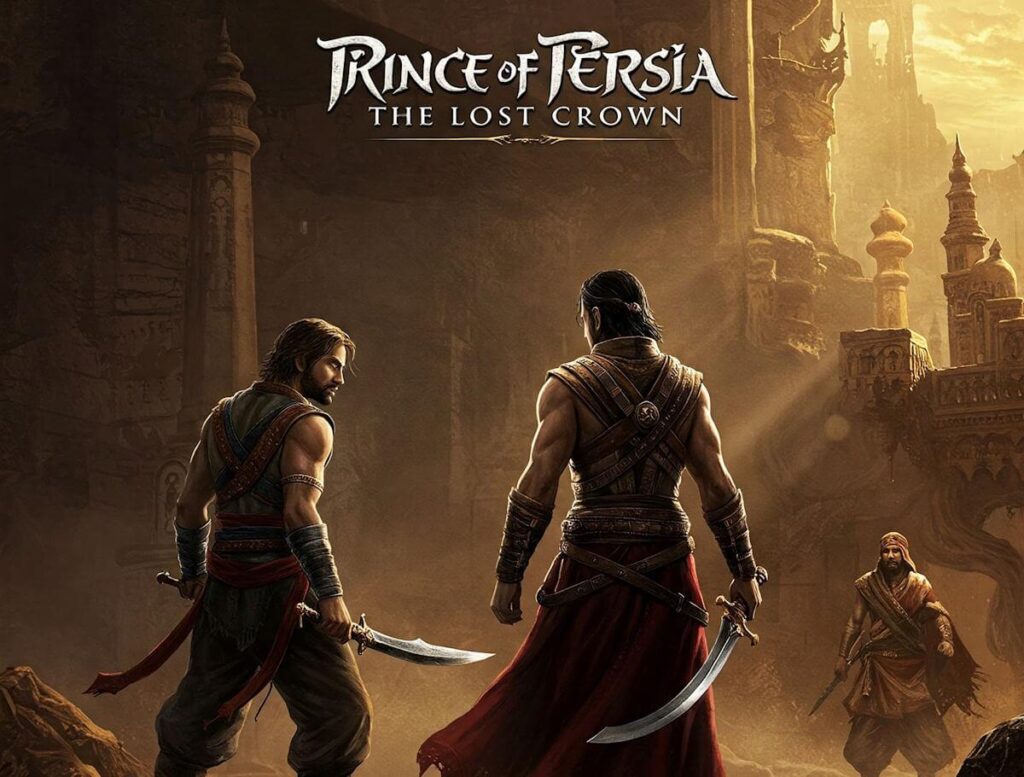Tekken 8 marks the latest installment in the iconic Tekken franchise, which has been a cornerstone of the fighting game genre since its initial release in 1994. Developed by Bandai Namco Entertainment, the game is set to release on December 26, 2023. Following the extensive history of its predecessors, Tekken 8 is anticipated to elevate the series to new heights with its cutting-edge graphics, innovative gameplay mechanics, and a refreshing roster of characters.
The development of Tekken 8 began shortly after the critical and commercial success of Tekken 7, which laid the groundwork for returning characters and storylines. With a focus on delivering unparalleled experiences in gameplay, the development team aims to blend nostalgia with modern advances in gaming technology to create a product that appeals to both longstanding fans and newcomers alike. The involvement of renowned developers and artists associated with the franchise continues to instill confidence in the community regarding the game’s potential quality and longevity.
Fan expectations for Tekken 8 are understandably high, considering the franchise’s storied legacy and its influence on the competitive gaming scene. The competitive gaming community eagerly anticipates how the game will cater to eSports, as many professional players hope for refined balance and diverse character abilities to facilitate competitive play. As the release date approaches, excitement grows, with players discussing potential character inclusions and anticipated changes to gameplay mechanics. Ultimately, Tekken 8 is set to be a defining installment that could shape both the future of the franchise and the competitive gaming landscape.
Visual and Technical Enhancements
In recent years, the gaming industry has witnessed substantial advancements in graphics and technology, and Tekken 8 is no exception. This installment employs a state-of-the-art game engine that significantly elevates the visual fidelity compared to its predecessors. Character models are now more detailed, showcasing intricate facial expressions and lifelike textures, which create a more immersive atmosphere during gameplay. These enhancements not only make the characters easily distinguishable but also breathe new life into the beloved roster by giving them a modern touch.
Animations are another critical area where Tekken 8 shines. The fluidity of movement has been enhanced, resulting in more realistic fighting sequences. The transitions between attacks and defensive maneuvers feel smoother, making combat more engaging. Each character possesses unique animations that reflect their fighting styles, adding depth to both the visual presentation and the strategic elements of matches. This meticulous attention to detail allows players to connect more deeply with their chosen fighters, ultimately improving overall enjoyment.
Environmental design has also seen significant improvements. The stages are dynamically crafted, with interactive elements that react to player actions. For instance, environments now feature destructible objects, allowing for additional tactical options during fights. Moreover, the visual diversity of stages has increased, showcasing stunning backdrops that enrich the overall aesthetic direction of the game. The combination of vibrant colors, realistic lighting effects, and diverse settings enhances the player experience, making each match feel like a fresh encounter.
Overall, the visual and technical enhancements in Tekken 8 contribute significantly to the immersion and enjoyment of the gameplay. With detailed character models, improved animations, and captivating environments, the game not only meets but exceeds expectations, affirming Tekken’s position as a leader in the fighting game genre.
Gameplay Mechanics Overview
Tekken 8 introduces several innovative gameplay mechanics that significantly alter the combat experience compared to its predecessor, Tekken 7. One of the most notable changes is the introduction of the Heat System, which empowers players during matches. This new mechanic allows characters to unleash powerful moves and combos for a limited period, providing strategic depth in battle. Utilization of the Heat System can shift the momentum in matches, making timing and execution crucial for players seeking to outmaneuver their opponents.
In addition to the Heat System, Tekken 8 incorporates advancements in character animations and fluidity, enhancing the overall visual appeal of the game. The improved fidelity allows for more nuanced movements and greater responsiveness during gameplay. Players familiar with Tekken 7 will notice the increased polish and precision in character actions, which contribute to a more immersive combat experience. Characters’ hurt boxes and hit boxes have also received adjustments, ensuring that the mechanics of collision and attacks feel more intuitive than before.
Moreover, the game has streamlined the combo system, making it more accessible to newcomers while still providing depth for competitive veterans. This is a welcome change, as Tekken 7’s complex systems could sometimes be overwhelming for new players. The balance between simplicity and depth fosters an environment where players can experiment with combos and learn the intricacies of the gameplay at their own pace.
However, these changes do invite scrutiny, particularly regarding the balance of power among characters. The inclusion of stronger mechanics may lead to a scenario where certain characters dominate, echoing feedback from the community regarding character viability. Overall, while Tekken 8 proudly embraces innovation, it remains essential to monitor how these mechanics evolve within the competitive landscape, ensuring that the game maintains its identity while appealing to both casual and pro players. This evolution of gameplay mechanics is indeed significant as the series ventures into a new era.
Character Roster and Development
Tekken 8 continues the celebrated tradition of the franchise by offering an extensive character roster that appeals to both longtime fans and newcomers alike. This installment features a blend of returning iconic fighters and a selection of new contenders, enhancing the game’s overall diversity and strategic depth. Classic characters such as Jin Kazama and Kazuya Mishima are joined by their longstanding rival, Lars Alexandersson, ensuring that loyal players feel a strong connection to familiar gameplay mechanics and narratives.
New characters have also been introduced, among them intriguing fighters who bring fresh dynamics to Tekken 8. One standout new addition is the character named Azumi, a martial artist with a compelling backstory and unique combat style incorporating acrobatic maneuvers and devastating strikes. Her entry not only invigorates the narrative with her personal motivations and relationships within the Tekken universe but also challenges existing gameplay paradigms, prompting players to adapt their strategies.
Character design remains a focal point in this installment, with each fighter meticulously crafted to reflect their unique styles and backgrounds. For example, returning character Paul Phoenix maintains his recognizable appearance but features enhanced graphics that showcase the advancements in technology since previous versions. The attention to detail in both aesthetic and functional design contributes to a richer gaming experience, allowing players to appreciate the nuances in each character’s abilities.
A crucial aspect of the character roster lies in maintaining balance among fighters while ensuring diversity in combat styles. The developers have placed emphasis on crafting characters with distinct movesets, strengths, and weaknesses, facilitating engaging matchups across various playstyles. This attention to detail not only promotes fairness in competitive play but also enriches the narrative fabric of Tekken 8, further solidifying its position as a premier fighting game in the genre.
Storyline and Narrative Elements
The storyline of Tekken 8 continues to build upon the rich narrative tapestry established in previous entries of the franchise. Set against the backdrop of not only intense martial arts competition but also interwoven family dynamics, the game escalates the ongoing feud between the Mishima clan. Players will find themselves diving deeply into the intricate tales of characters as the narrative unfolds, revealing layers of conflict, betrayal, and redemption.
Central to Tekken 8’s plot are the character arcs that have been developed over the years. Returning fighters such as Jin Kazama, Kazuya Mishima, and others face unresolved issues from past encounters, resulting in emotionally charged confrontations. This entry emphasizes character relationships, particularly focusing on familial ties, which play a pivotal role in motivating their actions. Adding complexity to these interactions is the introduction of new characters whose motives intertwine with existing ones, promising to enrich the gameplay with multifaceted dynamics.
The story mode serves not only as an introduction to gameplay mechanics but also as a means of connecting players with the overarching narrative. Through cinematics and cut-scenes, Tekken 8 effectively illustrates the evolution of characters while drawing in those who may not be familiar with prior installments. Each battle encountered reveals critical plot points and character backstories, paving the way for new rivalries and alliances.
Moreover, the themes of vengeance, loyalty, and the struggle for power resonate throughout Tekken 8. The high stakes of the tournament are compounded by the personal motivations of each character, making the narrative compelling and engaging. As players progress, they experience not just a fight for supremacy but a story that captures the essence of the human condition, reflected through each warrior’s journey.
Multiplayer Experience and Community Reaction
The multiplayer aspect of Tekken 8 has garnered significant attention since its release, with many players eager to test their skills against others in diverse online matches. The game offers various multiplayer options, including ranked matches, casual play, and tournaments that cater to both competitive and casual players. This flexibility in gameplay modes encourages a broader player engagement, allowing individuals to select their preferred style of competition, whether it be the intensity of ranked matches or the more relaxed atmosphere of casual play.
Ranked matches in Tekken 8 come with a robust ranking system that not only tracks player progress but also ensures fair matchmaking. Players can expect to fight against opponents of similar skill levels, which enhances the overall experience and encourages skill development. This system has been well-received by gamers, as it allows for a more satisfying competitive environment, fostering a sense of achievement as players climb the ranks. Additionally, the integration of leaderboards further stimulates competition, encouraging players to improve continuously and refine their gameplay strategies.
Community features also play a crucial role in keeping players engaged with Tekken 8. Online lobbies, friend invites, and community events create a social atmosphere that combines the thrill of competition with camaraderie. Players have expressed positive feedback regarding these features, highlighting the ease of connecting with fellow enthusiasts and the overall accessibility of multiplayer modes. Interaction through forums and social media platforms showcases a thriving community that passionately discusses strategies, character choices, and upcoming updates, fostering a sense of belonging.
Initial reactions from the fighting game community have generally been favorable, with many praising the fluidity of online matches and the seamless integration of community features. While challenges remain, such as server stability and matchmaking times, the overall impression is that Tekken 8 has successfully revitalized interest in the franchise, reminding players of the excitement that comes with battling it out in a vibrant multiplayer landscape.
Competitor Analysis: Comparison with Other Fighting Games
As fighting games continue to evolve, Tekken 8 stands at an intriguing crossroads, vying for attention amidst giants like Street Fighter and Mortal Kombat. Each franchise brings its unique flavor, contributing to a diverse gaming ecosystem. The strengths and weaknesses of Tekken 8 relative to these competitors can be assessed from several angles, including gameplay mechanics, character roster, and marketing strategies.
One of the strongest attributes of Tekken 8 is its focus on intricate combat mechanics and a deep character roster, which appeals to both beginners and seasoned players. This franchise utilizes a less chaotic fighting style compared to Mortal Kombat, which is known for its brutal finishers and graphic violence. Tekken’s cinematic approach to combat emphasizes strategy and timing, making it a significant player in the competitive scene. Its introduction of new mechanics and visual fidelity reportedly enhances the gaming experience, setting it apart in a crowded market.
In contrast, Street Fighter offers a more accessible entry point for newcomers but possesses layers of complexity that appeal to competitive players. The game relies heavily on character archetypes and a more straightforward control scheme. Street Fighter’s extensive marketing strategy has also kept it in the public consciousness, utilizing a variety of events and collaborations that maintain its relevance. While Tekken 8 may strive to catch up in terms of marketing prowess, its in-depth gameplay may resonate deeper with committed gamers looking for substance rather than surface-level appeal.
Moreover, Mortal Kombat has cultivated a niche of its own, thriving on storytelling and iconic characters. Its rich lore draws in players who appreciate narrative alongside combat. This adds a dimension to the gameplay experience that Tekken and Street Fighter may strategically neglect. Ultimately, Tekken 8 must carve out a distinctive identity by leveraging its technical depth while addressing its marketing strategies to ensure it does not get overshadowed by its peers.
Future Prospects and Updates
As the gaming community looks forward to the release of Tekken 8, excitement mounts regarding its potential updates and downloadable content (DLC) plans. The developers, Bandai Namco, have a strong history of supporting their fighting game titles with substantial post-launch content. This may include additional characters, stages, and balance patches aimed at fine-tuning gameplay mechanics. The introduction of new content post-release can enhance the longevity of Tekken 8 and maintain player engagement. There are indications that the developers may continue the tradition of introducing guest characters from other popular franchises, fostering a cross-universe appeal.
In terms of Tekken 8 as a competitive game, the community is optimistic about the potential for robust competitive support. With renowned events such as EVO and online tournaments gaining popularity in recent years, it is essential for designers to lay the groundwork for a thriving competitive scene. Tekken 8 could implement features to streamline online matchmaking, improve lag compensation, and provide tools for players to analyze their performance, further elevating the competitive landscape. Regular updates addressing balance issues, alongside ongoing community feedback, may also contribute to a fair and engaging competitive environment.
The future direction of the Tekken franchise remains a topic of speculation. Fans are eager to see how Bandai Namco will evolve the series amidst changing gaming trends and player preferences. With an enduring fanbase, the inclusion of community-driven events, spectator modes, and interactive features can help foster a sense of belonging among players. It is clear that the future of Tekken 8 hinges on a commitment to ongoing improvement and actively engaging with the community. As players eagerly await launch, all eyes will undoubtedly be on the evolution of this esteemed fighting game franchise.
Final Thoughts and Rating
As we conclude our review of Tekken 8, it is essential to reflect on the various aspects that contribute to the game’s appeal. The franchise has a rich history and dedicated fan base, and Tekken 8 aims to both honor that legacy and innovate for the future. The game brings forth impressive graphics that enhance the visual experience, with character designs and animations that are as dynamic as the fluid combat mechanics. The environments are meticulously crafted, providing players with immersive arenas that evoke both nostalgia and excitement.
The gameplay mechanics in Tekken 8 have evolved, introducing new elements while retaining the classic combat style that long-time players cherish. The balance between accessibility for newcomers and depth for seasoned fighters is commendable. The diverse roster boasts both old favorites and new characters, catering to various playstyles and preferences. This aspect not only reinforces the franchise’s legacy but also introduces fresh dynamics that can invigorate the competitive scene.
However, it’s crucial to mention areas where Tekken 8 could improve. The online experience may need further refinement to ensure a seamless multiplayer environment, a critical factor in contemporary fighting games. Additionally, while the technical prowess of the game is evident, its overall pacing and content depth will determine whether it can sustain player engagement over time.
In light of these observations, Tekken 8 demonstrates significant promise as the latest installment in the beloved series. It captures the essence of what has made Tekken a stalwart in the fighting game genre while pushing boundaries in visual fidelity and gameplay. On a rating scale from 1 to 10, Tekken 8 earns a solid 8, recognizing both its triumphs and the potential for further enhancement in the evolving landscape of fighting games.




